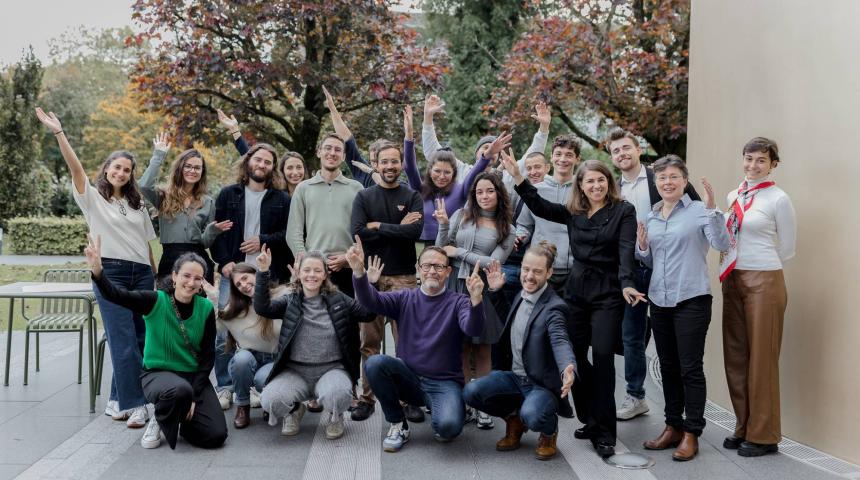Marcel Rindisbacher

"Professional PhD students bring a lot of relevant experience to the class room. Many students have a good understanding of the scope and limitations of the material taught. The interaction with these students is a very enriching experience for professors and I hope the same holds true for students. "
What is your current research field and can you position it relative to other fields in Finance?
Most of my research is in the area of dynamic asset allocation and life-cycle portfolio choice. Contributions are both theoretical and computational.
Life-cycle portfolio choice and the design of pension plans is of considerable importance to tackle today’s challenges affecting social security. The financial engineering approach to optimal asset allocation and the design of retirement products is a long neglected but promising area of financial research and innovation.
When continuous-time finance was born in the seventies, Nobel Prize winner Robert Merton did simultaneously work on derivative pricing and on optimal dynamic asset allocation. Whereas derivative pricing research has fundamentally transformed financial markets, his and others’ work on dynamic asset allocation so far had only limited practical impact. This is mainly due to the computational challenges dynamic programming faces. Asset allocation is a large-scale problem. In my research, I try to tackle large-scale asset allocation models that can be potentially useful to find optimal strategies for institutional investors.
Recently, I have renewed my interest in models with asymmetric information. My research in this area focuses on performance and skill measurement and the regulation of insider information in financial markets.
Finally, recently I also started to investigate the role of learning and regime-dependent risk aversion in explaining the risk premium and volatility puzzles. Currently, I explore further applications of this model to understand the nominal term structure of interest and inflation risk premium.
Can you tell us about your main contributions so far in this field?
In joint work with Prof. Detemple and Prof. Garcia, I have developed a new computational method to calculate optimal portfolios in an intertemporal setting with multiple assets and arbitrary factor diffusions. The novel method relies on a probabilistic representation of the optimal portfolio and relies on results from Malliavin calculus. This representation allows to calculate Monte Carlo estimators of portfolio weights. In contrast to traditional lattice-based methods and dynamic programming approaches to calculate optimal portfolios, the new Monte Carlo Malliavin Derivative (MCMD) estimator does not suffer from the curse of dimensionality. It can be applied to realistic large-scale asset allocation problems.
On the theoretical front, in joint work with Prof. Detemple, we have derived a new representation of the optimal hedging portfolio against fluctuations in the investment opportunity set. This novel representation of hedging portfolios is in the spirit of Heath-Jarrow-Morton (HJM) term structure models and emphasises the role of bonds as risk-free asset of long-run investors.
Jointly, with Prof. Bodie and Prof. Detemple I have worked on life-cycle-portfolio choice problems and studied the design of optimal pension plans.
More recently, I have started to work on the optimal portfolio of active investors who have anticipative information. Based on the optimal strategy of an informed investor, we have derived new structural timing regressions that allow to test for timing and selection skill. In contrast to classic timing regressions, these non-linear regressions using high frequency data can detect even small levels of skills.
I have also started to work extensively on the impact of informed investors on the equilibrium stock price risk premium and volatility. These models are dynamic extensions of static models that have been studied by Grossman and Stiglitz. In the latest working paper, I study the informational content of non-redundant derivative contracts and explore the relation between allocational and informational efficiency of financial innovation in a noisy rational equilibrium model.
Finally, in joint work with Prof. Berrada and Prof. Detemple, we have developed a model with regime-dependent risk aversion and learning that can explain the equity premium and excess volatility puzzle. With low levels of risk aversion, we can match both the steady state and dynamic evolution of the risk premium and the volatility.
How are your findings helpful for policy makers and financial markets design?
In my work on informed investors, I have investigated whether traditional report-or-abstain type of insider trading rules are indeed socially optimal. I show that dependent on configurations of risk tolerance and fundamental dividend parametres, the presence of informed traders can lead to a Pareto improvement. Hence, the presence of privately informed insiders is desirable because they partially reveal valuable information. In other cases, their presence is socially non-desirable and leads to a Pareto inferior allocation. To achieve the social optimal allocation in all situations, we derive a contingent Tobin-type information tax that allows the regulator to enforce the Pareto optimal allocation in all states such that insiders only trade when their presence is welfare improving. This suggests that state-contingent taxes could be used to efficiently regulate insider trading.
I hope that the financial engineering approach to life-cycle finance and the design of optimal pension plans will influence how optimal retirement products will be designed in the future. There are potentially huge economies of scale in that market. Current retirement instruments are suboptimal. In particular, popular instruments like target-date funds may be ill-suited to achieve retirement goals as shown in my research.
You have recently taught in our PhD Programme an elective course on “Monte Carlo Methods in Finance”. What have you covered in this advanced course?
I discuss recent developments and applications of Monte Carlo Methods in pricing and hedging financial derivatives and teach how to implement large-scale dynamic asset allocation models using MCMD methods. I put much emphasis on the theoretical foundations and talk about asymptotic error analysis. In addition, I compare several variance reduction techniques. Finally, I also present some recent applications of Monte Carlo methods in statistical inference and filtering. The last topic could easily be a course on its own.
How is this material relevant to the current big data/machine learning revolution in the finance industry?
Big data/machine learning often requires or relies on large scale computations or inference. Machine learning in particular can provide efficient methods for solving filtering problems. However, the statistical properties of many of these methods is not yet well understood. Given the practical interest and scope of applications of these novel techniques, this will lead to a true innovation in designing and analysing the Monte Carlo methods to solve large-scale computational problems.
Our PhD programme is mainly open to professionals. How does this population compare to the traditional PhD population of just graduated students?
Professional PhD students bring a lot of relevant experience to the class room. Many students have a good understanding of the scope and limitations of the material taught. The interaction with these students is a very enriching experience for professors and I hope the same holds true for students. Unfortunately, some students in the current traditional PhD generation are too focused on completing course work and sometimes lack the ability and knowledge to formulate relevant research questions. It is harder to motivate traditional PhD students and more challenging to convince students with a strong professional background that a research idea has true value. Overall, to teach professionals is an enriching experience.
As a leading academic scholar, what advice can you give our students to source good ideas and provide an execution which increases their publishing probability?
To provide a clear path to success is difficult because research projects can significantly differ in scope and scale. A necessary condition is to have an interesting and non-trivial research question. This, together with good knowledge of the relevant research literature can possibly lead to a research publication with considerable impact. The publication process can be challenging. Never give up. Take the referee reports seriously and work hard to address the concerns an editor or referee may have. Many ideas in finance, even those having won the Noble prize, have been rejected initially. This does not imply that a rejected paper is necessarily a Noble prize-winning idea, but provides evidence that perseverance is a key factor for success.



